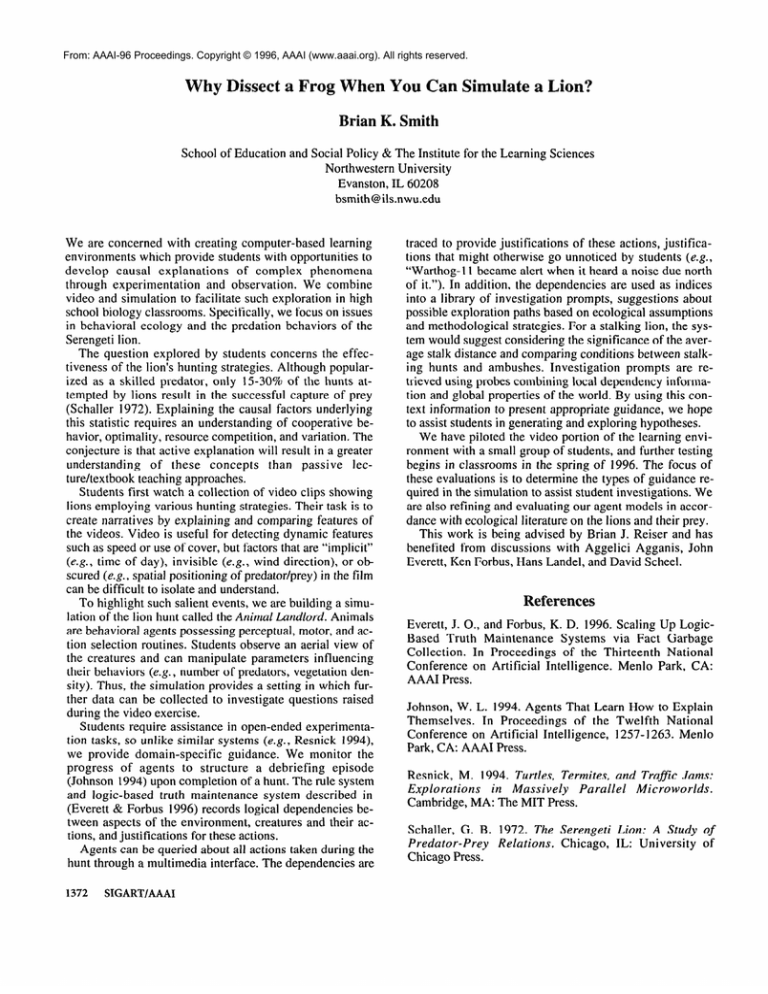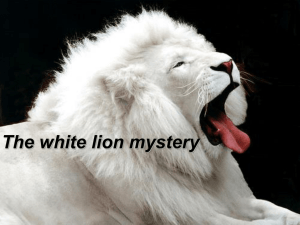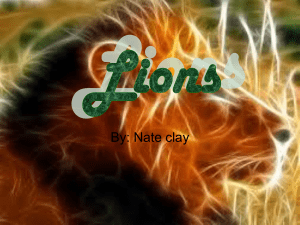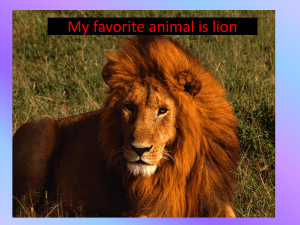Why Dissect a Frog When ... Brian K. Smith
advertisement

From: AAAI-96 Proceedings. Copyright © 1996, AAAI (www.aaai.org). All rights reserved. Why Dissect a Frog When You Can Simulate a Lion? Brian K. Smith School of Education and Social Policy & The Institute for the Learning Northwestern University Evanston, IL 60208 bsmith@ils.nwu.edu We are concerned with creating computer-based learning environments which provide students with opportunities to develop causal explanations of complex phenomena through experimentation and observation. We combine video and simulation to facilitate such exploration in high school biology classrooms. Specifically, we focus on issues in behavioral ecology and the predation behaviors of the Serengeti lion. The question explored by students concerns the effectiveness of the lion’s hunting strategies. Although popularized as a skilled predator, only 1530% of the hunts attempted by lions result in the successful capture of prey (Schaller 1972). Explaining the causal factors underlying this statistic requires an understanding of cooperative behavior, optimality, resource competition, and variation. The conjecture is that active explanation will result in a greater understanding of these concepts than passive lecture/textbook teaching approaches. Students first watch a collection of video clips showing lions employing various hunting strategies. Their task is to create narratives by explaining and comparing features of the videos. Video is useful for detecting dynamic features such as speed or use of cover, but factors that are “implicit” (e.g., time of day), invisible (e.g., wind direction), or ob scured (e.g., spatial positioning of predator/prey) in the film can be difficult to isolate and understand. To highlight such salient events, we are building a simulation of the lion hunt called the Animal Landlord. Animals are behavioral agents possessing perceptual, motor, and action selection routines. Students observe an aerial view of the creatures and can manipulate parameters influencing their behaviors (e.g., number of predators, vegetation density). Thus, the simulation provides a setting in which further data can be collected to investigate questions raised during the video exercise. Students require assistance in open-ended experimentation tasks, so unlike similar systems (e.g., Resnick 1994), we provide domain-specific guidance. We monitor the progress of agents to structure a debriefing episode (Johnson 1994) upon completion of a hunt. The rule system and logic-based truth maintenance system described in (Everett & Forbus 1996) records logical dependencies between aspects of the environment, creatures and their actions, and justifications for these actions. Agents can be queried about all actions taken during the hunt through a multimedia interface. The dependencies are 1372 SIGARTIAAAI Sciences traced to provide justifications of these actions, justifications that might otherwise go unnoticed by students (e.g., “Warthogbecame alert when it heard a noise due north of it.“). In addition, the dependencies are used as indices into a library of investigation prompts, suggestions about possible exploration paths based on ecological assumptions and methodological strategies. For a stalking lion, the system would suggest considering the significance of the average stalk distance and comparing conditions between stalking hunts and ambushes. Investigation prompts are retrieved using probes combining local dependency information and global properties of the world. By using this context information to present appropriate guidance, we hope to assist students in generating and exploring hypotheses. We have piloted the video portion of the learning environment with a small group of students, and further testing begins in classrooms in the spring of 1996. The focus of these evaluations is to determine the types of guidance required in the simulation to assist student investigations. We are also refining and evaluating our agent models in accordance with ecological literature on the lions and their prey. This work is being advised by Brian J. Reiser and has benefited from discussions with Aggelici Agganis, John Everett, Ken Forbus, Hans Landel, and David Scheel. References Everett, J. O., and Forbus, K. D. 1996. Scaling Up LogicBased Truth Maintenance Systems via Fact Garbage Collection. In Proceedings of the Thirteenth National Conference on Artificial Intelligence. Menlo Park, CA: AAAI Press. Johnson, W. L. 1994. Agents That Learn How to Explain Themselves. In Proceedings of the Twelfth National Conference on Artificial Intelligence, 1257-l 263. Menlo Park, CA: AAAI Press. Resnick, M. 1994. Turtles, Termites, and TrafJic Jams: Explorations in Massively Parallel Microworlds. Cambridge, MA: The MIT Press. Schaller, G. B. 1972. The Serengeti Predator-Prey Relations. Chicago, Chicago Press. Lion: A Study of IL: University of





